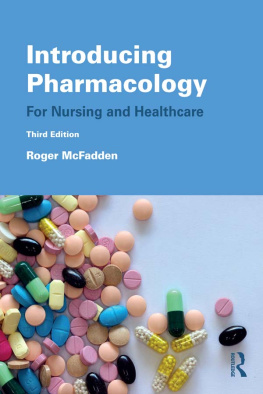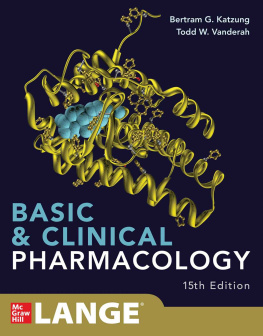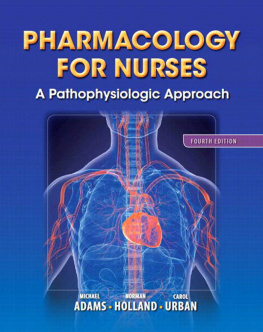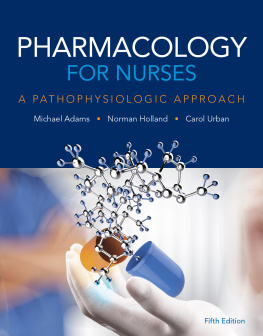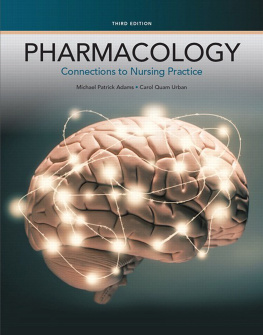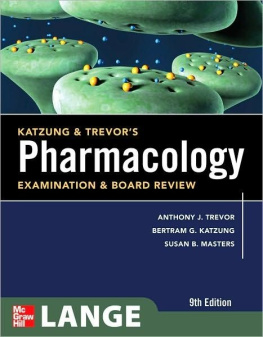Pharmacology can be quite daunting to the student approaching the subject for the first time. The main reason for this is that most pharmacological activity takes place at a cellular or biochemical level and relatively few people are really comfortable down among the cells and molecules. This, however, is the level where we need to be, not only to understand the subject of pharmacology but also to understand the literature relating to the subject. This literature consists of not only textbooks on pharmacology but also clinical reference books such as the British National Formulary (BNF) that you will find in daily use in every UK hospital ward and GP surgery. The BNF appears in an updated edition at six-monthly intervals and is published jointly by the British Medical Association and the Royal Pharmaceutical Society of great Britain. Clinical practitioners use this standard reference book on licensed drugs to ensure that the drug they are prescribing is suitable for the patient, that the patient is being prescribed the correct dose and that the drug will not interact with other drugs. However, a look at the contents page of the BNF will quickly convince you that you need to have some understanding of pharmacology just to access and use this publication. Here is a short sample of the section headings relating to various classes of drugs contained in the BNF:
- Calcium channel blockers
- Selective beta-2 agonists
- Angiotensin-converting enzyme inhibitors
- Alpha-adrenoceptor blocking drugs
- Non-steroidal anti-inflammatory drugs
- H2 receptor antagonists
- Selective serotonin re-uptake inhibitors
- Cyclo-oxygenase-2 inhibitors
If you are already familiar with these terms then you can probably progress quickly to a more advanced pharmacology book. If not, then you will need to learn them especially if you are going to be involved in the prescribing or administration of drugs to patients. You not only need to be familiar with the terms but you also need to know what the terms mean which is a fundamental requirement in ensuring patient safety. Nursing and other health professionals who administer drugs to patients are responsible for the safe administration of those drugs. This means that those staff must be familiar with those drugs, how they work in the body, how they may cause side-effects and possibly interact with other drugs. The classes of drugs mentioned above are in fact the clinical names of some of the most common drug groups that include antihypertensives, analgesics, bronchodilators and antidepressants.
One of the key aims of Introducing Pharmacology is to familiarise you with the language of pharmacology, the names of drugs and the terms that you will find on every packet of drugs and in every publication dealing with the clinical use of those drugs. You will need this language not only to study and understand pharmacology but also to discuss drugs and their effects with patients and fellow professionals.
Drugs are chemicals that are introduced into the human body to treat or prevent disease. Drugs can relieve symptoms such as pain and swelling, resolve problems such as indigestion and anxiety or manage problems such as heart disease. There are hundreds of different types of drugs designed to treat hundreds of disorders and each type of drug works by a unique action of its own. The way that some drugs work is relatively straightforward while others have quite complex actions. Ultimately, however, if we are going to understand how any of these drugs work, we need to transport ourselves to the level at which most drugs work the cell.
Now, although the basic action of most drugs can be explained at a cellular level, they eventually have an effect on organs and systems that can be observed either by the clinical practitioner or by the patient themselves. This means that to really understand the action of drugs you have to be able to connect their action at cellular level with their effect on organs and systems. Let us illustrate this by looking at some common drugs and drug groups with which you are probably familiar (or at least have heard of) see . All of these drugs act on specific cells of the body but have an effect above cellular level.
The gap between the target cell and the effect the drug has on the body is highlighted in the table by an arrow and this is largely what pharmacology is about explaining how a drug that targets a particular cell produces its therapeutic effect on the body. To understand this, you need to appreciate that the body has various levels of organisation.
Some common drugs, their cellular targets and their effects
| Drug | Target cell | Mechanism | Therapeutic effects |
| Beta-blockers | Heart cells |  | Prevents an increase in heart rate |
| Local anaesthetics Analgesics | Nerve cells Immune cells |  | Prevents pain in minor surgery Reduces inflammatory pain |
| Antidepressants | Nerve cells |  | Relieves depression |
| Statins | Liver cells |  | Reduces blood cholesterol levels |
shows a simplified hierarchy of structures, starting with cell chemistry and moving upwards to the whole body. As an example of this hierarchy we have used the circulatory system, but bear in mind that this simplified diagram does not imply that the heart is made up of only one type of tissue. There may be only one heart but it is made up of several different types of tissue and these tissues are made up of their own specialised cell types.
Most drugs interact initially with the first two categories, cell organelles and their components, the chemicals of which they are made. However, the effects of drugs are generally observed on the body as a whole or the organ systems. For example, the anti-angina drug glyceryl trinitrate (GTN) targets the cells of various blood vessels, including those of the heart itself, but the effect observed by the patient is the lessening of their chest pain. Another example is the anti-hypertensive drug nifedipine, which reduces blood pressure by targeting the cell membrane of the muscle cells surrounding blood vessels. Here the effect is on the circulatory system where you will observe a fall in blood pressure.
In of Introducing Pharmacology we will be following the stories of most of our major drug groups from their interaction with cells right through to their therapeutic effect on organ systems. You will see that when we take each stage a step at a time, then pharmacology is actually quite a straightforward subject and is nowhere near as daunting as it may at first seem. But first things first we need to familiarise ourselves with cells and some of the basic biochemistry that takes place in those cells.

